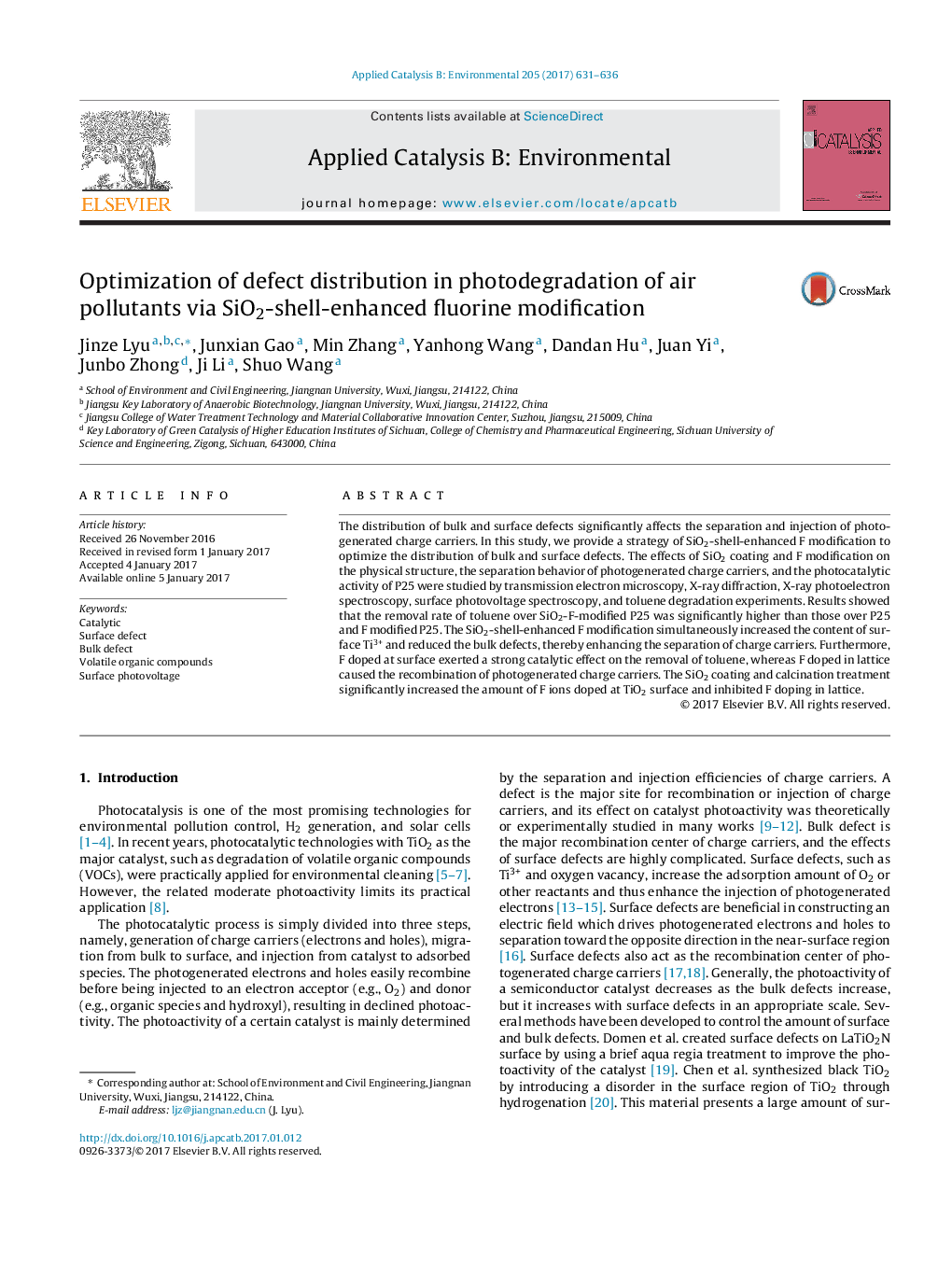| Article ID | Journal | Published Year | Pages | File Type |
|---|---|---|---|---|
| 6454407 | Applied Catalysis B: Environmental | 2017 | 6 Pages |
â¢Bulk defects were reduced by SiO2-shell-enhanced F modification.â¢Surface Ti3+ were increased by SiO2-shell-enhanced F modification.â¢Surface doped F was increased by SiO2-shell-enhanced F modification.â¢F doping in lattice was inhibited by SiO2-shell-enhanced F modification.â¢Surface doped F acted as catalytic site whereas lattice F induced bulk defects.
The distribution of bulk and surface defects significantly affects the separation and injection of photogenerated charge carriers. In this study, we provide a strategy of SiO2-shell-enhanced F modification to optimize the distribution of bulk and surface defects. The effects of SiO2 coating and F modification on the physical structure, the separation behavior of photogenerated charge carriers, and the photocatalytic activity of P25 were studied by transmission electron microscopy, X-ray diffraction, X-ray photoelectron spectroscopy, surface photovoltage spectroscopy, and toluene degradation experiments. Results showed that the removal rate of toluene over SiO2-F-modified P25 was significantly higher than those over P25 and F modified P25. The SiO2-shell-enhanced F modification simultaneously increased the content of surface Ti3+ and reduced the bulk defects, thereby enhancing the separation of charge carriers. Furthermore, F doped at surface exerted a strong catalytic effect on the removal of toluene, whereas F doped in lattice caused the recombination of photogenerated charge carriers. The SiO2 coating and calcination treatment significantly increased the amount of F ions doped at TiO2 surface and inhibited F doping in lattice.
Graphical abstractDownload high-res image (287KB)Download full-size image
